Nahtazū
Visitors to Walt Disney World come from around the country and around the world. They may have unique accents, languages, and customs; their own fashion and food… but one thing most visitors tend to have in common? They live within a day trip of a zoo. In some cases, they may even live near a very, very good zoo. Which raises the all-important question: even if Disney’s Animal Kingdom would be a very, very, very good zoo, what would make it worth Disney-level admission prices that could be exponentially higher than tickets to the local zoo back home?
Disney’s answer is a memorable one, and throughout the park’s development, Disney Imagineers had to balance a careful consideration: continuously ensuring that Disney’s Wild Animal Kingdom was “Nahtazū,” but so much more.
Sure, Animal Kingdom would be arranged by “continent” as many zoos are; and yes, as the 21st century approached more and more zoos were transitioning to “animal theme parks” themselves, populated by “exotic” architecture meant to evoke Africa, Asia, South America, Australia, etc. rather than simple enclosures. And it’s true that the stars of Disney’s Wild Animal Kingdom would be the 1,000 animals in Disney’s care, housed in intricate habitats that would look convincingly natural and boundary-free – a mainstay of modern zoos; the park is even accredited by the AZA – the Association of Zoos and Aquariums.
But Disney’s new park would take it a step further.
“Ancient and imagined”

Michael Eisner called for Disney’s Wild Animal Kingdom to be “a kingdom of animals real, ancient, and imagined; a kingdom ruled by lions, dinosaurs, and dragons…”
Famed Imagineer Joe Rohde lead the development of the park’s photorealistic Africa and Asia, overseeing the crafted Discovery Island and the park’s exotic, exploratory theme, but this park would contain two entirely original realms to bring those “ancient and imagined” animals to life (as only Disney can)… The grand slam to make Disney’s Wild Animal Kingdom into something that was “Nahtazū” at all.
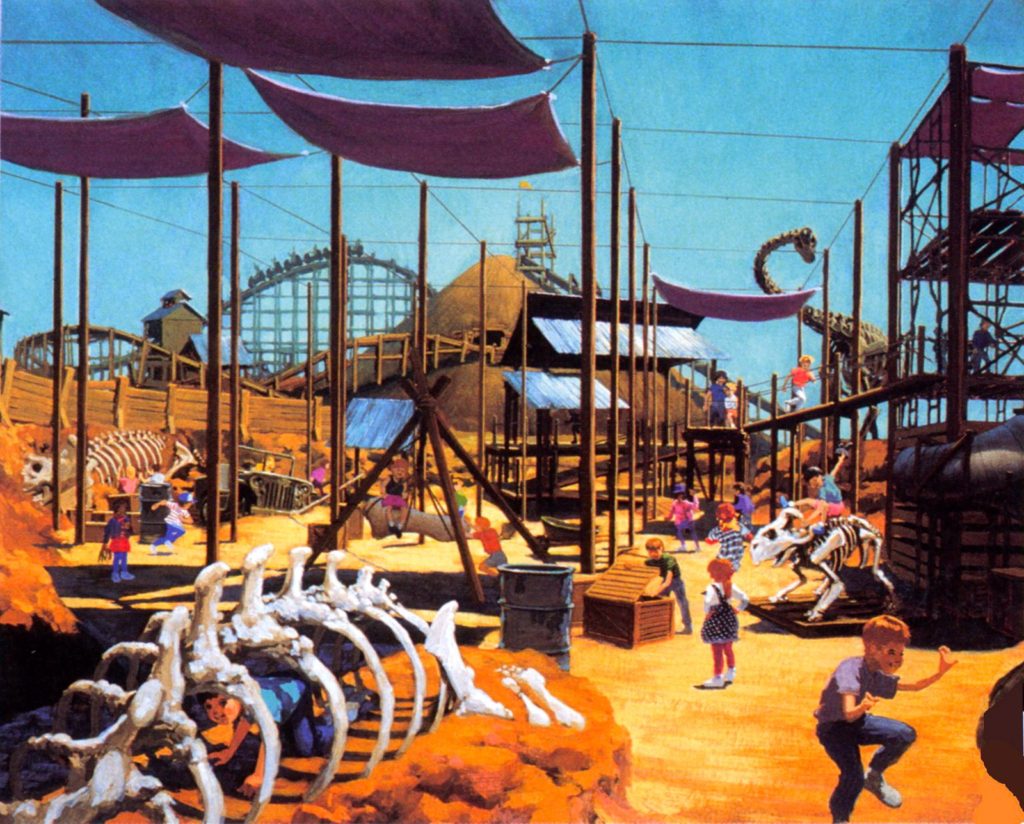
Take, for example, those “ancient” creatures… As the story goes, a remote highway in the southwest United States had, for decades, been home to a simple sand and gravel company and an adjoining gas station to fuel up the big rigs that would rumble in and out on delivery… until the diggers dug up a massive dinosaur bone, causing tourists and scientists alike to decend on the once-lonely highway. With the shambling Excavator roller coaster and a family dark ride to the past aboard Time Rovers, the tourist-trap of Dinoland U.S.A. would be the first piece to set Animal Kingdom apart from a zoo.
The second was perhaps even more ambitious…
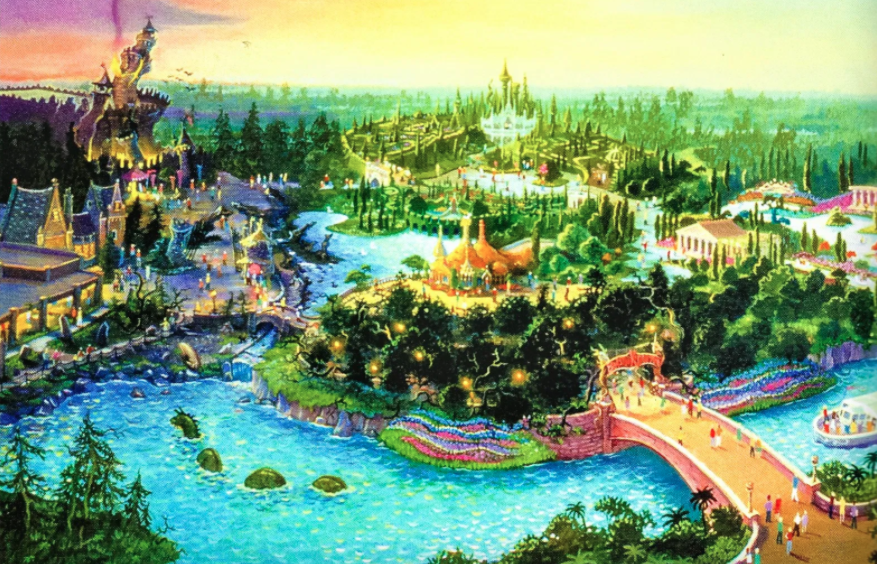
To bring “imagined” creatures to life, a second design team was developing Beastly Kingdom, a legendary realm split in two: good and evil. In its grim, scorched, medieval half, thrillseekers would find the Dragon Tower roller coaster; its lighter, fairytale, Grecian half would include animatronic encounters with griffons, unicorns, and dancing hippos.
Ultimately, Dinoland came to life in much-altered form (thanks to the Modern Marvel: Dinosaur) while Beastly Kingdom was shelved.
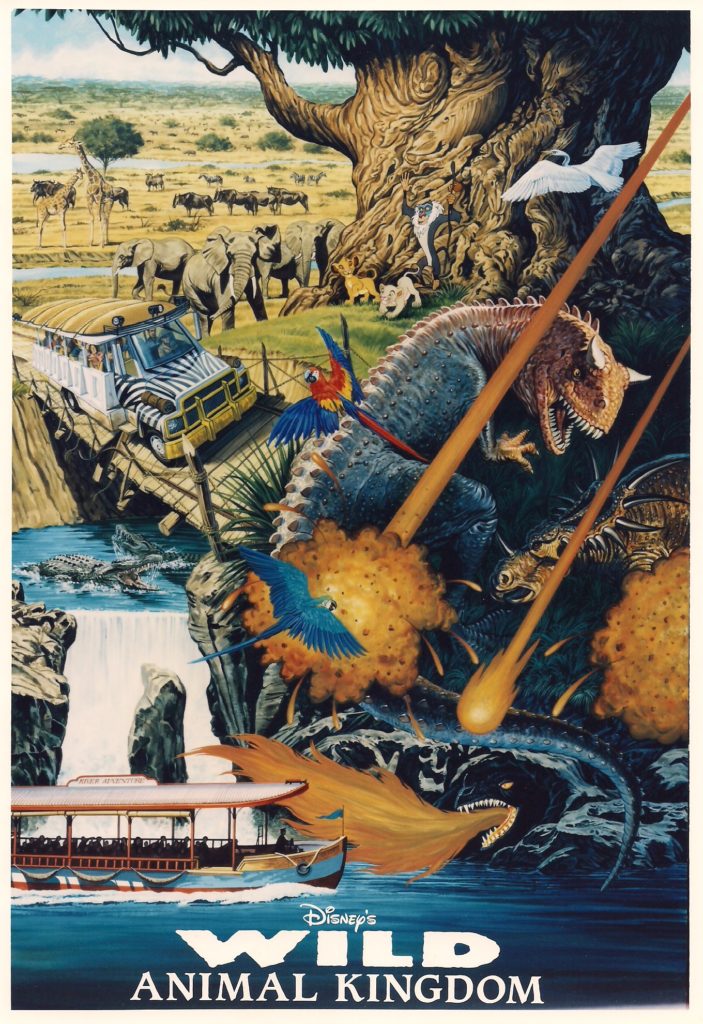
So when the renamed Disney’s Animal Kingdom finally opened in 1998, it was without any “imagined” creatures… except a few hidden hints that Beastly Kingdom would arrive soon. Guests liked the new park but weren’t entirely convinced that its two notable rides made it worth Disney-level admission prices.
It meant that, from the day it opened, guests, Imagineers, and Disney executives agreed that Disney’s Animal Kingdom needed to grow, and that Phase II should start immediately.
Growth spurt

Like all theme parks, Disney’s Animal Kingdom had its fair share of growing pains.
When the park opened on April 22, 1998, it offered just four rides in its line-up – two transportation rides (a short-lived River Cruise and the Wildlife Express train), the truly terrifying Countdown to Extinction thrill ride, and the headlining and massive Kilimanjaro Safaris.
And sure, the park offered hundreds of spectacular animal experiences, some hit shows (including the runaway smash Festival of the Lion King), unusually exotic food, and nooks and crannies worth exploring. But at least for the family determined to check-off the attraction boxes, Disney’s Animal Kingdom didn’t have enough experiences to best a day of Magic Kingdom’s fantasy favorites, the wonders of Epcot, or the thrills of Disney’s Hollywood Studios.
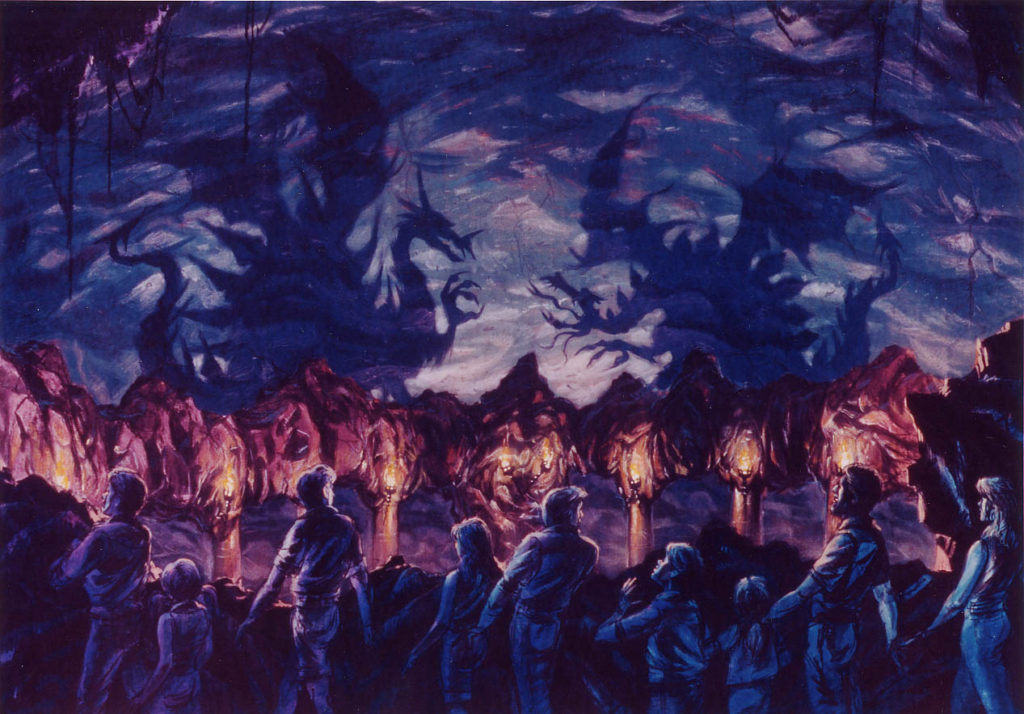
Naturally, all could’ve been in agreement that it was time for the “Phase II” expansion of the park that had already been planned, bringing Beastly Kingdom to life where the temporary Camp Minnie-Mickey family area had been built… The problem was, the medieval land of dragons and unicorns was already under construction… just up the road at Universal Orlando. In fact, we traced the unusual could-be connection between Beastly Kingdom and Universal’s Islands of Adventure in a full Possibilityland: Beastly Kingdom feature.
That meant that Disney needed to find a new way to bring thrills and “imagined” creatures to Disney’s Animal Kingdom.
Legends arise
Despite their image tied deeply to princess, pirates, and family fare, most readers here won’t be surprised that Disney does adventure well. Look no further than our in-depth Lost Legend and Modern Marvel entries on explorations 20,000 Leagues Under the Sea, to the Center of the Earth, from the Earth to the Moon, and so many more. And yet, there may be no journey more extreme than that to Everest.
In real life, only about a thousand people have ever summitted the tallest mountain on Earth, and several hundred have died in pursuit… And when it came time to bring the legends of Everest and its abominable guardian to life, Disney had to call upon its entire portfolio.
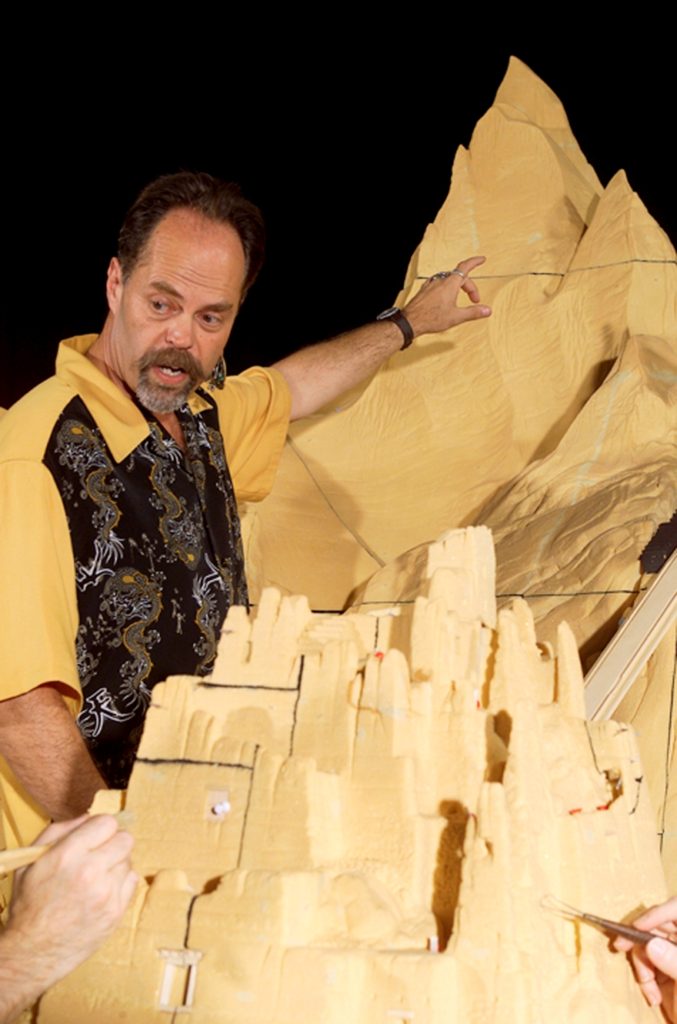
Led by Joe Rohde – again, that creative visionary behind the rest of Disney’s Animal Kingdom – a team of Imagineers did a deep dive in Tibet to uncover the textures and tactile features of a world so different from our own. In so doing, they concieved of an expansion to the park’s Asia ruled over by the Himalayas. The expansive mountain range would feature a number of forced perspective peaks with only the farthest being Everest.
Rohde and his team set to work developing ideas for a roller coaster through the Himalayas, carefully balancing the ride’s budget and scale. Initial clay mock-ups of the design at the top of this section, for example, showed that the too-large mountain would be dwarfed anyway, given that the train would be constantly entering and exiting the peak and thus throw off the careful forced perspective.
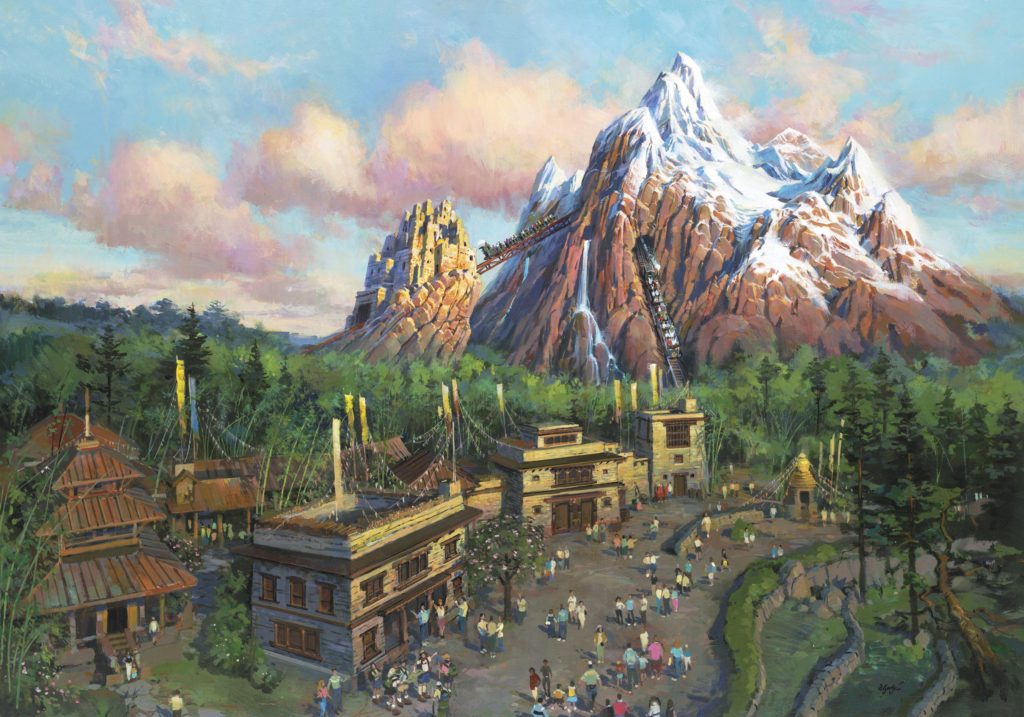
The plan was reformatted again and again. It took 24 clay versions before the team finalized what would become Expedition Everest.
They’d cast the roller coaster as a scenic tourist trip through the Himalayas. Our mission? To reach Everest by way of the Forbidden Mountain pass… The one supposedly under the protection of the Yeti itself…
Speaking of which, the inevitable encounter with the mythical Yeti wouldn’t just be the highlight of this new E-Ticket… it would be the driving force behind the entire plot, deeply embedded in Tibetan culture. Joe Rohde commented, “We position the Yeti as justifiably angry. He is sabotaging the railroad; driving us out of the mountain. His message is ‘You don’t have a right to everything you might want to claim.'”
The otherworldly beast would be represented in many different forms and media throughout the park and the ride’s queue, hinting at its mysterious and larger-than-life presence in the community, but as for what the “real” Yeti inside the ride would look like? To figure that out, Imagineers worked with biologist Stuart Sumida to use the primate features we know and logically create a creature that could survive in the Himalayas.
In so doing, Disney’s Animal Kingdom would also receive its first ever “imaginary” animal… (Or is it?)
Expedition Everest: Legend of the Forbidden Mountain offically opened on April 7, 2006, extending the park’s Asia and creating a new outer loop between Asia and Dinoland along the edge of the Discovery River.
On the next page, we’ll step into Animal Kingdom’s Anandapur and then explore the wonders of Everest to face to Yeti at last! Read on…




